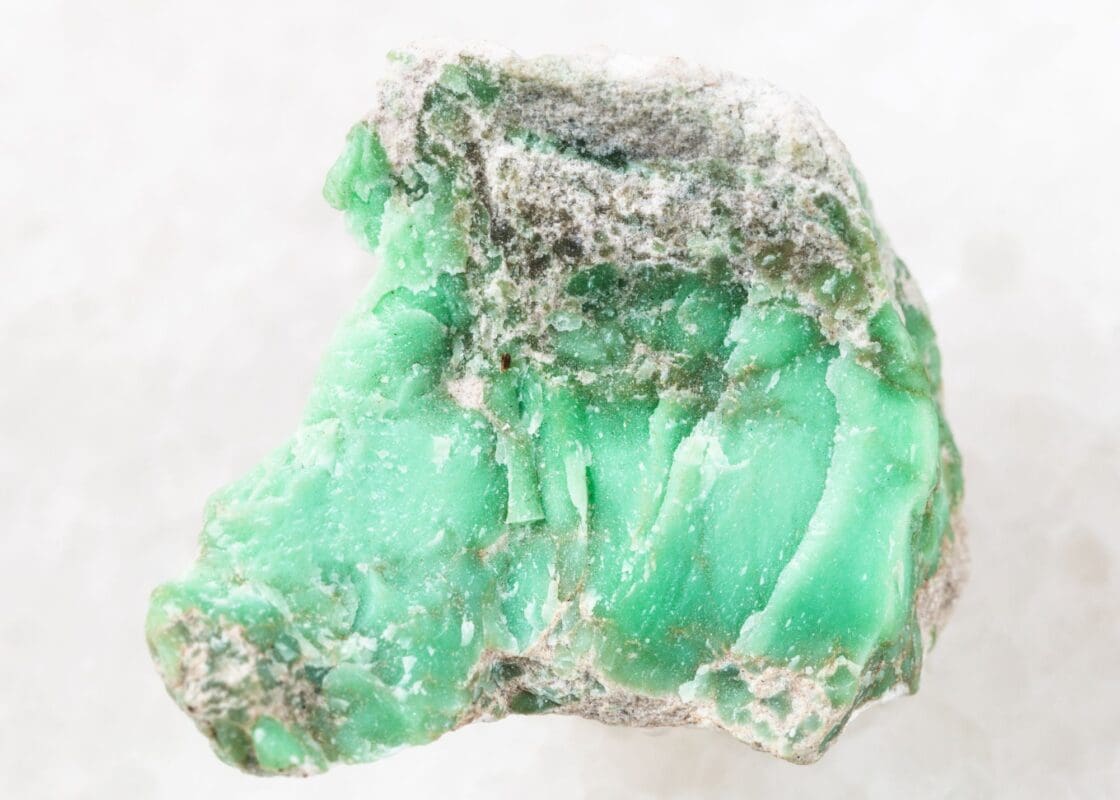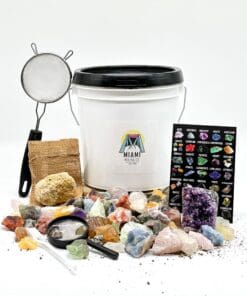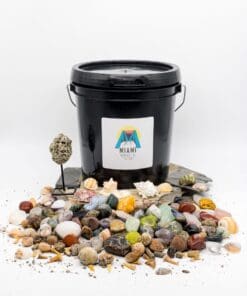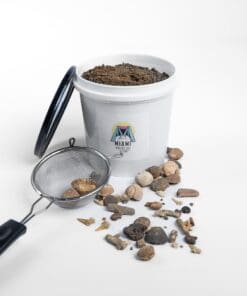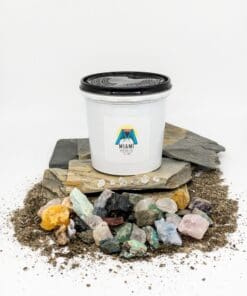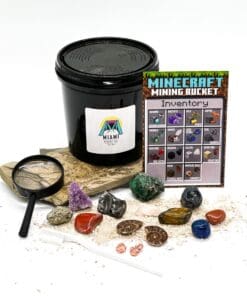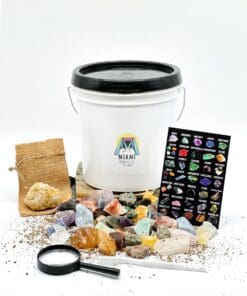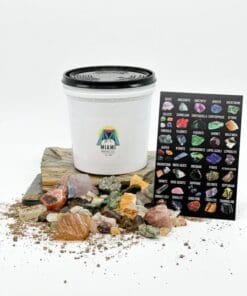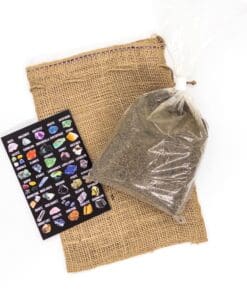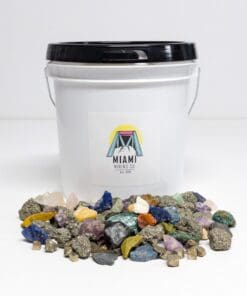From Mountains to Mines: Your Ultimate Gem Mining Utah Handbook
Utah, the Beehive State, isn’t just about salt lakes and deserts. Beneath its surface lies a treasure trove of colorful and captivating gemstones waiting to be unearthed. Gem mining in Utah offers an adventure-packed blend of geology, history, and outdoor fun. In this article, we’ll delve deep into the sparkling world of Utah’s gemstones.
The Most Popular Gemstones in Utah
Utah’s rich geology doesn’t just stop at its stunning arches and unique rock formations. Its underground wealth is demonstrated by an array of gemstones, both rare and common. Here, we’ll detail these precious and semi-precious stones, giving you an understanding of what you might find.
Rare Gemstones of Utah
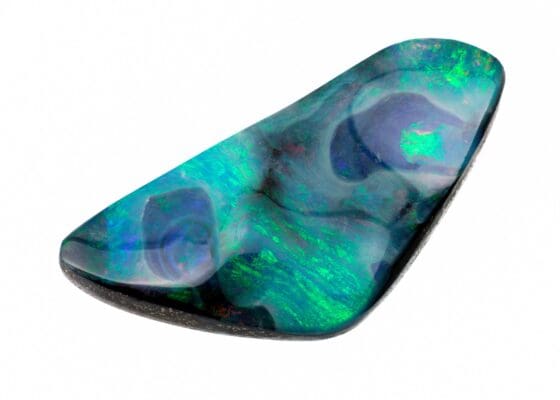
| Gemstone | Description |
|---|---|
| Red Beryl | Also known as bixbite, this gemstone is rarer than diamonds and is recognized for its ruby-like red hue. |
| Variscite | This green gemstone, similar to turquoise but with a more diverse pattern, is less common and highly sought after. |
| Black Opal | Found in parts of Utah, this gem showcases brilliant colors with a dark body tone, often compared to a galaxy. |
| Pink Topaz | While topaz is common in Utah, the pink variant is rare and treasured. |
| Purple Garnet | Unlike its more common red counterpart, purple garnet offers a unique and brilliant hue, making it a rare find in the state. |
Common Gemstones of Utah
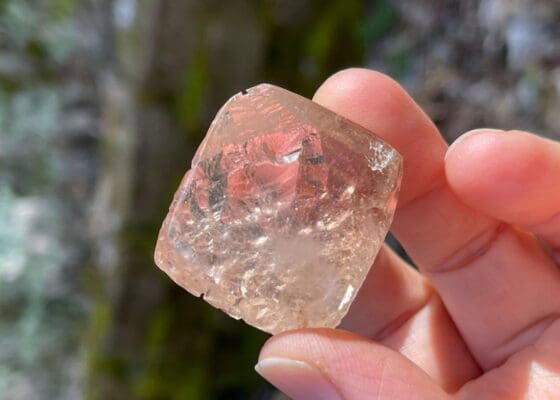
| Gemstone | Description |
|---|---|
| Topaz | Utah’s state gem, often found in a sherry or clear color, especially in the Thomas Range. |
| Agate | Coming in diverse patterns and colors, agates are a frequent find in the Beehive State. |
| Jasper | Often found alongside agate, jasper varieties in Utah can range from reds to greens to yellows. |
| Obsidian | This volcanic glass can be found in black, mahogany, and even snowflake patterns. |
| Amethyst | A form of quartz, this purple gemstone can be found in various Utah locations. |
| Hematite | Known for its metallic gray or black appearance, this mineral is also used as an ore for iron. |
| Calcite | Typically found in clear or white colors, it can sometimes display a rainbow of colors when in the right light. |
| Selenite | A clear or white gypsum crystal, it’s often found in large plates or crystalline structures. |
| Druzy Quartz | Tiny, sparkling crystals often found inside geodes or other larger rocks. |
| Septarian Nodules | Often called “dragon stones”, these are a combination of minerals, usually yellow calcite and brown aragonite. |
Each of these gemstones tells a story of Utah’s geological past, and both amateur and seasoned rock hounds have the chance to stumble upon something truly unique during their explorations.
Top Gem Mining Locations in Utah
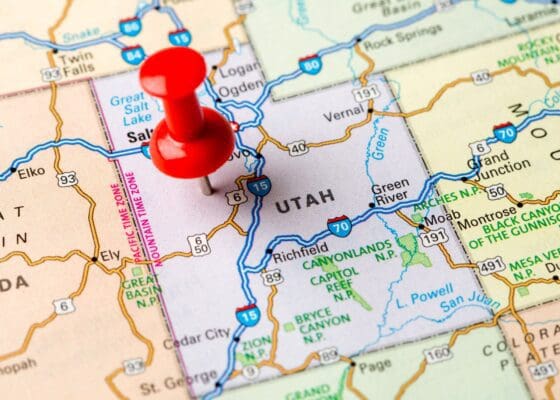
- Topaz Mountain, Juab County: As the name suggests, this location is best known for its abundance of topaz crystals. Found in the Thomas Range, Topaz Mountain offers a free public collecting area, ensuring a great trip for families or solo adventurers. The site is open year-round, though spring and fall are the most comfortable times to visit.
- Wah Wah Mountains: Located in Beaver County, this site is famous for the rare red beryl. While there are no standardized operating hours, some areas may require a permit. Always check before visiting, and be prepared for rugged terrains.
- Little Salt Lake Valley: Situated near the Red Hills of Parowan, this location is a great spot for variscite, a gem similar to turquoise. The area is generally accessible, but permissions might be needed for specific sites.
- Spectrum Sunstone Mine: This location is known for Oregon’s official state gem, the sunstone. They offer multiple digging areas and operate usually from May through October. Fees vary based on the type of mining experience you opt for.
- Dugway Geode Beds: Located in the Dugway Range in Juab County, this site is a haven for those hunting geodes. The area is open for public access, but remember to bring along the necessary tools to crack open the geodes.
- Beaver Lake Mining District: Located in Beaver County, this district is known for its variety of minerals, including agates, jaspers, and even opals. No specific operating hours, but always ensure you’re not trespassing on private property.
- Antelope Springs: This is the place to be if you’re interested in trilobite fossils. Located 17 miles west of Delta, it’s open year-round, but a small fee is charged for collecting.
- Needles District in Canyonlands National Park: Known for its beautiful moqui marbles or “shaman stones.” While collecting within the national park is prohibited, surrounding areas offer opportunities.
- Confusion Range: Located near the border of Millard and Juab Counties, this area offers a mix of red beryl and topaz. Ensure you have the right permissions before mining.
- Bear Lake: On the Utah-Idaho border, this location offers raspberry garnets. While the site is open year-round, it’s always a good practice to check local regulations and fees before starting your gem hunt.
Each of these sites in Utah offers a unique opportunity to uncover the geological wonders of the state. Before embarking on your gem-hunting journey, always ensure you are equipped with the right tools, knowledge of the area, and permissions if required.
History of Gem Mining in Utah
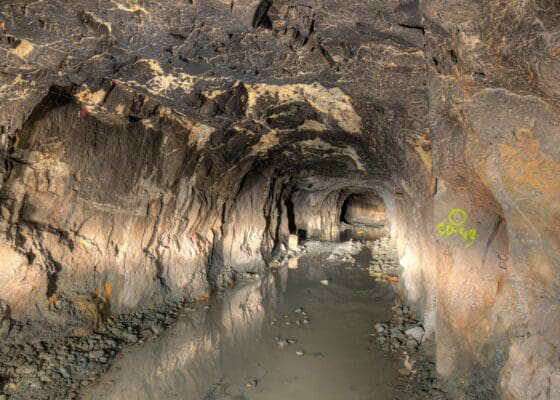
Utah, with its dramatic landscapes shaped by countless eons of geological activity, is also a land with a sparkling legacy. The history of gem mining in Utah intertwines with the tales of its earliest inhabitants, its pioneer settlers, and the ongoing search for geological treasures.
Long before the European settlers set foot in Utah, indigenous tribes, including the Utes, Paiutes, and Navajo, were well aware of the area’s rich mineral wealth. These ancient inhabitants utilized various stones for a myriad of purposes, from crafting tools and weapons to creating ornate jewelry and ceremonial items. The vibrant colors and shimmering qualities of certain gemstones held spiritual significance for these tribes.
With the arrival of the pioneers in the late 1800s, the vast mineral resources of Utah began to be commercially recognized and extracted. The quest wasn’t limited to just gold or silver; prospectors and geologists soon realized that Utah’s landscapes were dotted with a spectrum of gemstones ranging from topaz to the elusive red beryl. As towns sprouted up, so did tales of fortuitous discoveries and the dreams of striking it rich by stumbling upon a hidden vein of precious gems.
Mining booms came and went, yet what remained consistent was the allure of Utah’s gemstones. The early 20th century saw increased systematic exploration, leading to the establishment of several mines that are still operational today. Around this time, Topaz Mountain was identified as a significant source of its namesake gem, leading to its enduring popularity among gem enthusiasts.
In more recent decades, Utah’s gem mining has transitioned from a primarily commercial endeavor to a blend of commercial, educational, and recreational activities. Families, school groups, and solo adventurers now flock to renowned sites, equipped with tools and guided by stories of legendary finds. These enthusiasts, driven by both the joy of discovery and the lure of history, play an essential role in continuing Utah’s gem mining legacy.
Today, while machinery and technology might have revolutionized the mining industry, the heart of gem hunting in Utah remains rooted in its storied past. It’s an ongoing tribute to both the geological marvels of the Beehive State and the indomitable spirit of those who first sought to unearth its buried treasures.
Gem Mining Regulations in Utah

Navigating the intricate web of gem mining regulations in Utah is crucial for both amateur rock hounds and professional miners. These regulations, established by a combination of state, federal, and sometimes local agencies, are set in place not only to manage and conserve resources but also to protect the stunning and often fragile environments where these treasures are found.
First and foremost, understanding land ownership is paramount. Lands in Utah are categorized as federal, state, tribal, or private. Each has its own set of rules. For instance, while it’s generally acceptable to collect small amounts of rocks and minerals for personal use on Bureau of Land Management (BLM) lands, the same might not be true on state or tribal territories.
On federal lands, governed mainly by the BLM and the U.S. Forest Service, casual collection for personal, non-commercial use is usually allowed without a permit. However, “casual collection” is limited to reasonable quantities and specific types of materials. Commercial collection, meanwhile, requires permits and may be subject to royalties.
State lands, managed by the Utah School and Institutional Trust Lands Administration (SITLA), often require permits even for personal collection. Revenues generated from these permits contribute to Utah schools and institutions, making it a vital aspect of the state’s revenue system.
Tribal lands, rich in history and culture, are governed by individual tribes. Permissions are typically needed, and regulations can vary widely, reflecting the unique priorities and concerns of each tribe.
Private lands are a different arena altogether. Always secure permission from landowners before collecting. Trespassing not only jeopardizes personal legal standing but can also tarnish the reputation of the gem-hunting community as a whole.
Environmental conservation is another significant aspect of these regulations. Disturbing habitats, introducing pollutants, or causing soil erosion are concerns tied to gem mining. Regulations, therefore, often aim to minimize the ecological footprint of gem collecting activities.
Lastly, safety regulations are a cornerstone of mining rules. Mines, quarries, and collecting areas can present various hazards. Abiding by set guidelines ensures the safety of individuals and the community.
In conclusion, while Utah offers a cornucopia of gem-collecting opportunities, it’s essential to approach the activity with a sense of responsibility and knowledge. Familiarizing oneself with the state’s gem mining regulations ensures a respectful, enjoyable, and lawful experience. Remember, the goal is not only to treasure the gems of the present but also to preserve the gem-rich legacy for future generations.
Necessary Tools and Equipment for Gem Mining in Utah
The pursuit of gem mining, whether as a passionate hobby or a dedicated profession, demands a set of tools tailored to the specific environment and type of gemstone. Utah, with its varied terrains and plethora of gem varieties, poses unique challenges to gem seekers. Here’s a comprehensive guide on the tools and equipment essential for gem mining in the Beehive State.
1. Screening and Classifying Tools: Reveal those hidden treasures!
Description: Especially useful when hunting in sedimentary locations like riverbeds or dry washes, screens help in sorting through material to reveal hidden gemstones.

🛒 Explore Top Screening Sets on Amazon
2. Shovels and Trowels: Digging deep or just scratching the surface?
Description: For more delicate work or when dealing with softer grounds, smaller tools like hand trowels or even small brushes can be beneficial.

🛒 Find Quality Shovels and Trowels on Amazon
3. Picks and Hammers: The backbone of any gem hunting endeavor.
Description: Fundamental to any rock collector’s kit, these tools are invaluable for breaking and splitting rocks. A geologist’s hammer, distinguished by its flat end and pick-like side, is a must-have. Pair it with chisels of varying sizes to delicately extricate gems from surrounding rock without causing damage.

🛒 Check Out Best Picks and Hammers on Amazon
4. Buckets: Your trusted companion for carrying treasures.
Description: These are for collecting material that can later be sifted through. Opt for durable, lightweight materials, especially if you’ll be traveling longer distances.
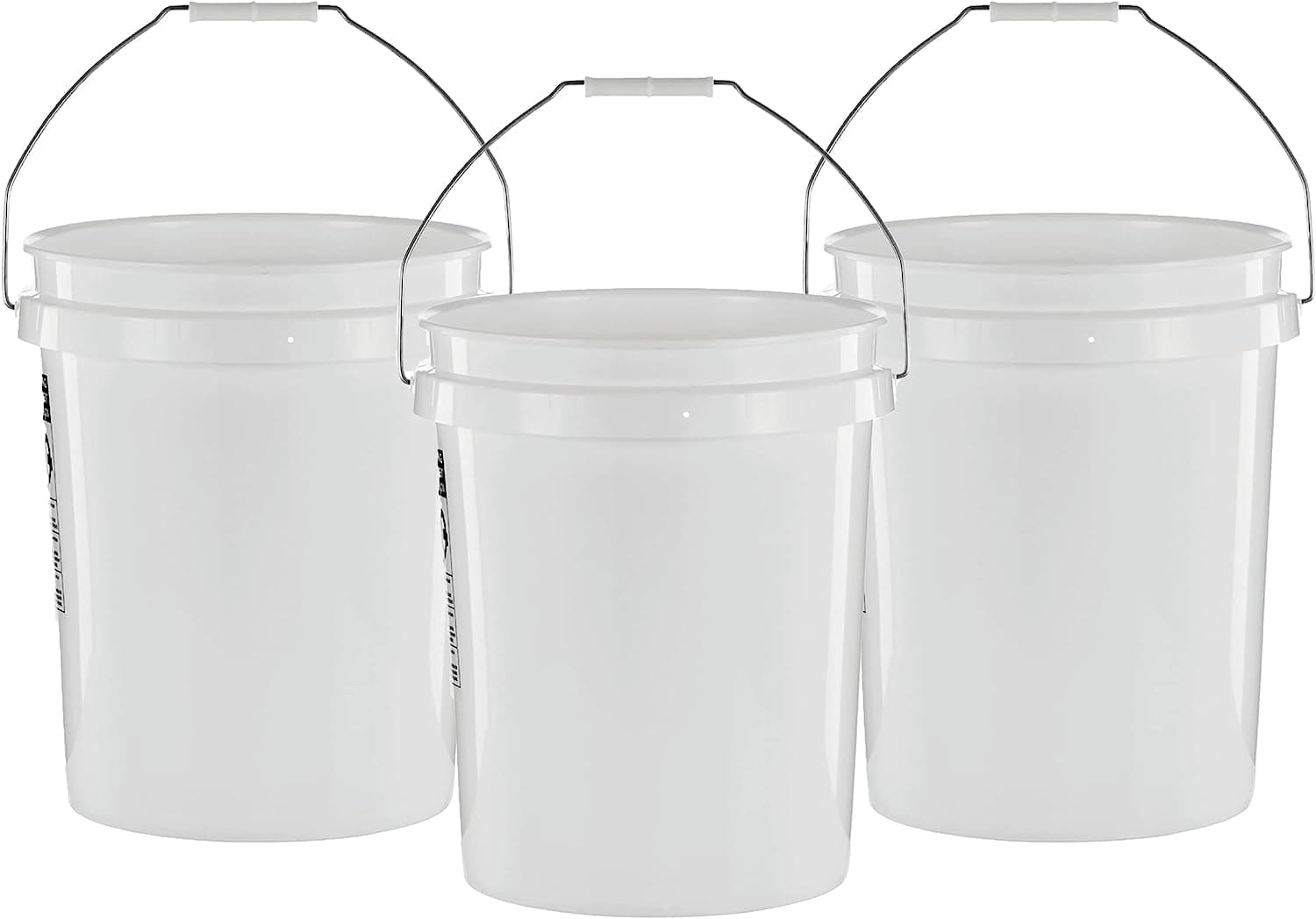
🛒 Shop for Reliable Buckets on Amazon
5. Magnifying Glass: Every detail counts!
Description: These tools allow for closer inspection of finds, assisting in identification and revealing the minute details that make each gem unique.

🛒 Grab Your Magnifying Glass on Amazon
6. Guidebooks and Field Guides: Knowledge at your fingertips.
Description: A comprehensive guidebook specific to Utah gemstones can be a critical tool. It helps in identification and provides insights on where specific stones might be found.

🛒 Discover the Best Field Guides on Amazon
7. Containers and Bags: Organize, store, and flaunt your finds.
Description: These are essential for storing and organizing the gems you find. Labeling them can also help in remembering the specifics of where and when each gem was found.

🛒 Shop for Storage Solutions on Amazon
8. First Aid Kit: Better safe than sorry!
Description: Given the rugged terrains and potential for minor injuries, always be prepared with a basic first aid kit.

🛒 Secure Your First Aid Kit on Amazon
As you set out on your Utah gem mining adventure, remember that the right tools are not only about enhancing the efficiency and success of your hunt but also about ensuring safety and minimal environmental impact. Proper preparation paves the way for a rewarding and memorable gem-seeking journey.
Tips and Tricks for Successful Gem Mining in Utah

Uncovering Utah’s hidden gemstone treasures is both an art and a science. While having the right tools is pivotal, knowing how to use them, coupled with insights from seasoned miners, can significantly amplify your success rate. Here are some invaluable tips and tricks to keep in mind as you delve into the vibrant world of gem mining in the Beehive State:
1. Research is Key: Before setting foot in a mining area, invest time in thorough research. Online forums, local mining associations, and books dedicated to Utah’s geology can provide a wealth of information, from the best times to visit specific locations to insights on potential finds.
2. Start Early: Not only does an early start help avoid the scorching midday sun, but it also gives you a better chance to find gems before areas become crowded, especially in popular sites.
3. Be Patient: Gem mining is often about patience and persistence. Some days might be fruitful, while others may yield little. Remember, every unsuccessful attempt is a step closer to a significant discovery.
4. Notice the Terrain: Some gemstones are found in specific geological formations. For instance, geodes often form in volcanic areas. Recognizing these formations can give you a head start.
5. Observe the Weather: After a rainstorm, many sediments wash away, often revealing hidden gemstones on the surface. Utilize these natural events to your advantage.
6. Connect with Locals: Local miners and residents can be a goldmine of information. Engaging with the community might lead you to lesser-known spots and updated advice on current conditions.
7. Leave No Trace: Respect the environment. Fill in holes you dig, pack out your trash, and minimize disturbances to natural habitats.
8. Join a Club: Consider joining a gem and mineral club. Many organize group outings, offering camaraderie and shared expertise.
9. Stay Safe: Always inform someone of your plans, especially if you’re heading into remote areas. Carry adequate water, food, and first-aid supplies.
10. Celebrate the Experience: While finding a gemstone is thrilling, remember to cherish the overall experience—the beauty of Utah’s landscapes, the joy of the hunt, and the knowledge gained.
Incorporating these tips into your gem mining strategy ensures not only a more fruitful search but also a richer, more fulfilling experience. The world of Utah gem mining is vast, and every adventure brings new opportunities, insights, and stories.
Handling Your Gemstone Finds
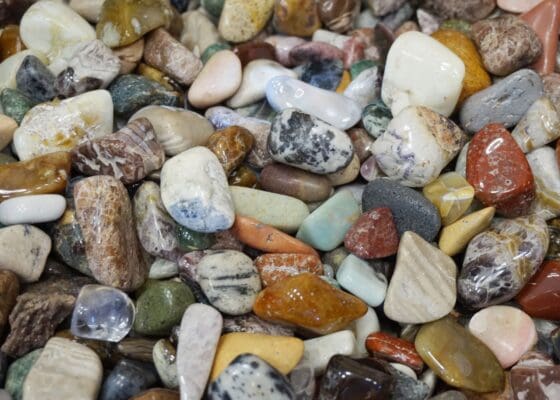
Discovering a gemstone is only the beginning of the journey. Once you’ve unearthed a potential treasure, the subsequent steps you take can greatly influence its value, beauty, and longevity. From cleaning to valuating, here’s a detailed guide on handling your gemstone finds in Utah:
1. Immediate Care: After extraction, gently wrap the gemstones in a soft cloth or place them in padded containers to prevent scratches or damage during transport.
2. Cleaning: Dirt and debris can mask a gem’s true beauty. Use a soft brush and lukewarm water to gently clean the surface. For stubborn dirt, a mild soap can be added. However, be wary of using chemicals or ultrasonic cleaners without knowledge of the gem’s properties, as some can be damaged by such treatments.
3. Documentation: Record the location, date, and conditions of your find. This can be invaluable for personal records, potential valuation, or even for sharing your discovery with the gem-hunting community.
4. Identification: Before taking further steps, correctly identify your gemstone. Reference books, local gem clubs, or gemologists can assist in this process. Knowing the gem type can guide subsequent decisions like cutting or storage.
5. Cutting and Polishing: Some gemstones reveal their true beauty only after being cut and polished. If you’re considering this, consult with a professional lapidary. They can provide advice on the best cuts for your gem and carry out the process, ensuring optimal results.
6. Valuation: If you believe you’ve found something of significant value, consult with a certified gemologist or appraiser. They can provide an expert assessment of the gem’s worth.
7. Storing: Store gemstones in individual pouches or boxes to prevent them from scratching each other. Keep them away from direct sunlight, extreme temperatures, or humid areas, as these can affect some gemstones.
8. Display: If showcasing your find, opt for display cases that offer protection from dust and environmental factors. For valuable pieces, UV-protective cases can prevent potential color fading.
9. Insurance: For particularly valuable finds, consider getting them insured. This provides peace of mind against potential loss or damage.
10. Share Your Story: The gem-hunting community thrives on shared experiences and discoveries. Engage in forums, join local clubs, or even document your journey online. Your story might inspire or assist fellow gem enthusiasts.
In summary, the journey of a gemstone doesn’t end upon discovery. Proper care, appreciation, and sharing of these natural wonders ensures they remain cherished treasures for generations to come.
Famous Gemstone Finds in Utah
The state of Utah, with its rich geological history and vast landscapes, has been the site of numerous significant gemstone discoveries over the years. These finds, both in terms of volume and value, have solidified Utah’s reputation in the gem-hunting world. Here’s a look into some of the most notable gemstone discoveries that have emerged from the state’s depths:
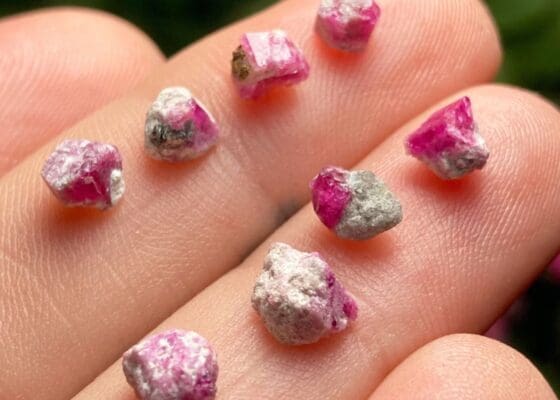
1. The Red Beryl Bounty: Often referred to as “red emerald” due to its stunning color and rarity, red beryl has been predominantly found in the Wah Wah Mountains of Utah. In fact, gem-quality red beryl is rarer than diamonds, making each discovery in the state a sensation in the gemological world.
2. Topaz Treasures: Topaz Mountain in Juab County has yielded a plethora of top-quality topaz crystals, some displaying the enchanting amber hue that occurs after prolonged exposure to the sun. These crystals, known for their perfect sherry color, stand as a testament to the state’s gemstone affluence.
3. The Geode Glee: Dugway Geode Beds, located in the vast Salt Flats in western Utah, has been the source of countless geodes filled with a myriad of crystal formations, ranging from clear quartz to vibrant amethyst.
4. Variscite Valor: Often mistaken for turquoise due to its captivating green hue, variscite is another gem primarily sourced from Utah. Notable deposits have been found in areas like Fairfield and Lucin.
5. Wonder of Sunstones: The Sunstone Knoll in Millard County has been a beacon for collectors, yielding beautiful sunstones that catch the light in a mesmerizing dance of colors.
6. Opal Odyssey: The state has unveiled various types of opals, especially from areas like Spencer Opal Mine. Some of these opals have displayed magnificent play-of-color, marking them as gems of exceptional quality.
7. Picasso Stone Prominence: This jasper variant, known for its abstract patterns reminiscent of Picasso’s art, is primarily found in Utah. Its unique designs have made it a favorite among lapidary enthusiasts.
8. Septarian Nodules: Known for their dragon-like patterns, these nodules, often termed “Dragon Stones,” have been discovered predominantly in the ancient seabeds of Utah.
Each of these notable discoveries has a tale of luck, perseverance, and geological marvel behind it. They serve as both inspiration and evidence of Utah’s abundant gemological gifts. As each stone sees the light of day, it adds a chapter to Utah’s illustrious gemstone legacy, urging enthusiasts to continue their quest for the next big find.
Additional Gem Mining Opportunities
Exploring beyond Utah’s borders opens up a realm of new gemological adventures. The surrounding states offer their own unique treasures and mining experiences. Here’s a list of neighboring states where you can further your gem-hunting journey:
1. Arizona Gem Mining: Known for its world-class turquoise, Arizona also offers opportunities to hunt for peridot, garnet, and even the elusive fire agate. The state’s vast desert landscapes and rich Native American history add a unique backdrop to every gem-hunting expedition.
2. Colorado Gem Mining: Colorado is renowned for its aquamarine deposits located in the Mount Antero area. Besides this, the state also boasts rich deposits of rhodochrosite, garnet, and topaz.
3. Idaho Gem Mining: As the “Gem State,” Idaho lives up to its name. It’s primarily known for opals and garnets, with the Spencer Opal Mines and Emerald Creek being popular destinations for enthusiasts.
4. Nevada Gem Mining: Beyond the glitz of its casinos, Nevada offers treasures of a different kind. From the Virgin Valley’s stunning black opals to turquoise and variscite, the state is a haven for gem seekers.
5. New Mexico Gem Mining: The “Land of Enchantment” is home to a range of minerals, including turquoise, peridot, and the enchanting moonstone. The state’s rich cultural history intertwined with gem mining makes it a unique destination.
6. Wyoming Gem Mining: Known for its jade deposits, Wyoming also provides opportunities to find garnets, opals, and the occasional diamond in areas like the Leucite Hills.
Each neighboring state presents its own set of challenges and rewards, ensuring that the gem-hunting journey never truly ends. By exploring these regions, you can broaden your understanding, enhance your collection, and immerse yourself deeper into the world of geology.
Want to know more about gem mining? Our Gem Mining Near Me guide has all the insights you need!
The Allure of Utah Gem Hunting & At-Home Alternatives
The thrill of gem hunting in Utah transcends the mere act of discovery. It’s an immersive experience, combining the breathtaking landscapes of the state with the exhilarating chase of uncovering nature’s hidden treasures. From the rugged terrains of the Wah Wah Mountains to the vast expanse of the Salt Flats, every corner of Utah promises a unique story, a chance to reconnect with the Earth, and an opportunity to hold a piece of history in one’s hands.
Yet, the beauty of gemology is that it doesn’t always require adventurous treks or specialized tools. For those unable to embark on a physical quest, or for enthusiasts looking to experience the joy of discovery from the comfort of their homes, a general Gem Mining Kit provides the perfect solution. These kits replicate the excitement of unearthing gemstones, offering a curated collection waiting to be sifted, identified, and cherished. They serve as a bridge, ensuring that the magic of gem hunting is accessible to all, irrespective of geography or expertise.

